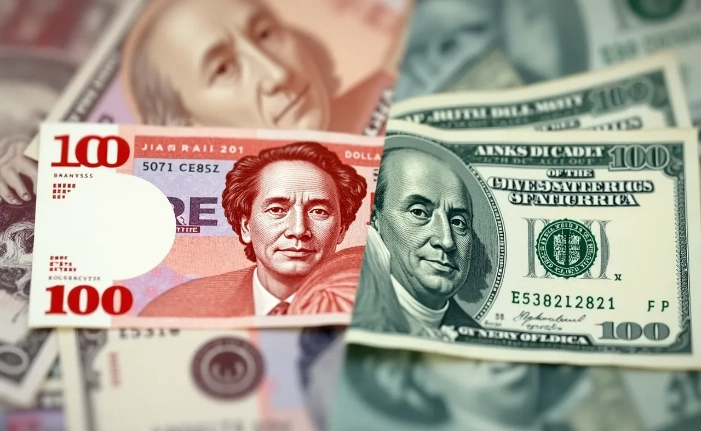Why Japan’s Currency is at 3-Decade Lows?
The Japanese Yen is on a downward spiral, plumbing the depths of a three-decade low and prompting jitters in currency markets. This weakness comes despite recent positive economic signs in Japan, including the first-interest rate hike since 2007. So, what’s ailing the Yen? Let’s dissect the key factors behind its depreciation.

The Rate Race: Interest rates are the silent puppeteers of foreign exchange. Here, they’re pulling the strings against the Yen. The currency has been on a steady decline for over three years, shedding a staggering third of its value since 2021.
Here’s the kicker: the Yen boasts the dubious honor of being the lowest-yielding G10 currency. This makes it prime pickings for investors seeking a “carry trade.” They borrow Yen at dirt-cheap rates (think sub-0.1%) and sell it to buy higher-yielding currencies, effectively squeezing the Yen’s value. These carry trades are particularly enticing during periods of low volatility, like the current market climate.
The stark contrast between U.S. and Japanese rates paints a clear picture. Short-term U.S. rates are hovering around 5.25-5.5%, with no signs of a cut until later this year. This translates to a yawning gap of almost 370 basis points between U.S. and Japanese 10-year government bond yields.
Central Bank Charade? Japan’s central bank attempted a historic shift by raising rates in March, but the move lacked conviction. The absence of any strong commitment to future hikes left investors comfortable maintaining their short Yen positions. In fact, Yen shorts recently hit a decade high.
This tepid policy shift also discourages large Japanese investors from repatriating their cash, as they can earn better returns abroad. Major financial institutions like Japan Post Bank and Japan Post Insurance haven’t signaled any significant changes in their portfolios following the Bank of Japan’s move.
Intervention on the Horizon? The recent plunge has breached the level that triggered intervention in 2022, putting markets on high alert. Finance Minister Shunichi Suzuki’s pledge to take “decisive action” against speculative moves echoes past rhetoric preceding yen-buying interventions. Traders are now keeping a wary eye on the 153-155 zone as a potential red line for intervention.
Real Talk: Beyond Tourism Perks the Yen’s weakness translates to a real effective exchange rate index value at its lowest since records began in 1994. This means tourists are getting more bang for their buck, fueling a tourism boom (February’s visitor numbers were a record high).
However, the domestic front paints a less rosy picture. Japanese households, who tend to be net importers, are facing the brunt of higher import costs because of the weak Yen, dampening domestic consumption, a crucial component of Japan’s fragile economic recovery.
The Yen’s weakness is also sending ripples beyond Japan’s borders. Some analysts believe it could erode the competitive edge of Chinese manufacturers, potentially contributing to recent declines in the Yuan (though Chinese authorities maintain tight control over their currency).

